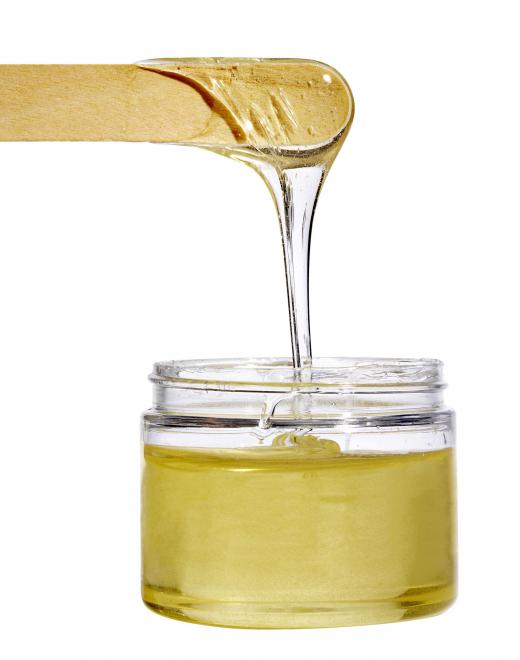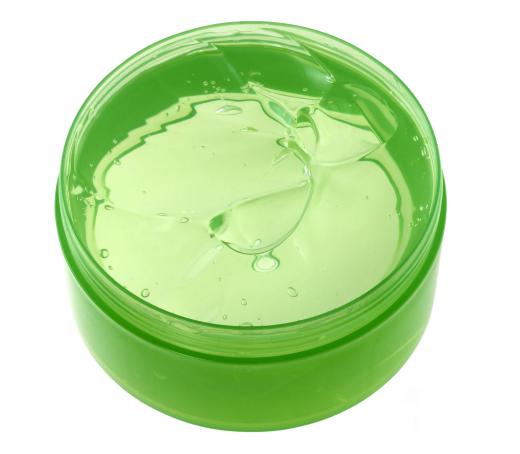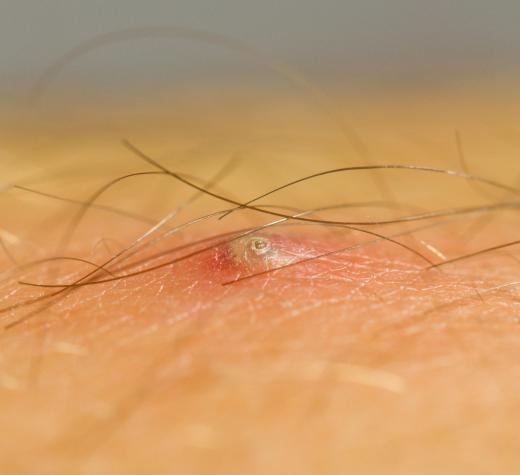Exfoliating the skin and trimming the hairs on the chest are usually recommended before chest waxing. Pain relievers can be used to minimize discomfort, and baby powder can be used to lessen the irritation of the skin. Warm wax should then be applied to the chest in the direction that the hair grows and the strips should be removed very quickly in the opposite direction. After waxing, aloe vera can be applied to the area.
For his first chest waxing, a man may want to go to a professional. A licensed and experienced professional will often be able to remove chest hair quickly and painlessly. She will also be able to give a man some pointers for at-home body waxing.

Before chest waxing, it is important to exfoliate the area. This can be done with a loofah or a body scrub. Exfoliating removes the top layer of dead skin. If this layer is not removed, there is more of a chance that hairs will become trapped beneath the surface. These trapped hairs will often result in painful ingrown hairs.
Trimming the chest hair is also recommended before chest waxing. Electric trimmers can be used to clip the hair to between a 0.25 to 0.5 inch (6.4 to 12.7 millimeters). Hair that is roughly this length will be much easier and less painful to remove.

Waxing the chest hairs can be quite painful, but there are some things that can be done to minimize the pain. Professionals often use a topical numbing agent on the chest. Men who prefer at-home chest waxing can also purchase topical numbing cream or spray. An over-the-counter pain reliever, such as ibuprofen, can also be taken roughly 30 minutes to an hour before waxing.

Chest wax can often stick to the skin as well as the hair. To help prevent this to some extent, baby powder can be dusted onto the chest before chest waxing. This will help absorb any excess moisture and protect the skin by preventing the wax from sticking to it.
Most at-home body wax can be heated in the microwave. To prevent the wax from becoming to hot too quickly, it should only be heated in five- to ten-second intervals. It should also be stirred frequently to prevent hot spots. Wax that is too hot can cause serious burns, and the temperature should be tested before being applied to the chest.
A small spatula or wooden stick can be used to apply the chest wax. It should be applied in a thin, even layer in the direction that the hair grows. The cloth strips should then be laid on top of the wax, and firm pressure should be applied. To remove the strip, hold the skin tightly and pull the strip quickly in the opposite direction of the hair growth. Olive oil or baby oil can be used to remove any remaining bits of wax.
Many men may experience some irritation after waxing their chests. Aloe vera gel can help minimize this irritation. Regular exfoliating can also help minimize ingrown hairs on the chest.
Share
BeautyAnswered is dedicated to providing accurate and trustworthy information. We carefully select reputable sources and employ a rigorous fact-checking process to maintain the highest standards. To learn more about our commitment to accuracy, read our editorial process.





































